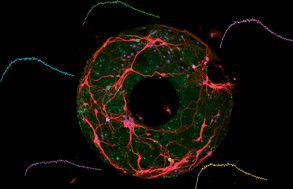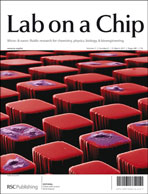Ring-shaped neuronal networks: a platform to study persistent activity†
Abstract
Persistent activity in the brain is involved in working memory and motor planning. The ability of the brain to hold information ‘online' long after an initiating stimulus is a hallmark of brain areas such as the prefrontal cortex. Recurrent network loops such as the thalamocortical loop and reciprocal loops in the cortex are potential substrates that can support such activity. However, native brain circuitry makes it difficult to study mechanisms underlying such persistent activity. Here we propose a platform to study synaptic mechanisms of such persistent activity by constraining neuronal networks to a recurrent loop like geometry. Using a


 Please wait while we load your content...
Please wait while we load your content...